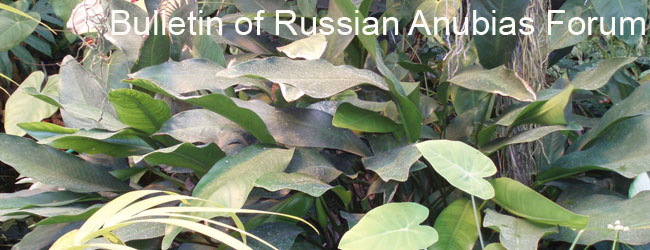First I’ll relate some events preceding. During my holidays in Europe in August 2010 I managed to meet Dr. Anton Lamboj, an editor of the Austrian aquarium-terrarium journal “Aqua-Terra-Austria” (АТА). I’ve been taking the journal for about a year already, and it attracts me for its homeliness first. There are no “epoch-making” descriptions of new fish or plants species, no news about the world’s first breeding of another rarity, no overbalance in describing a particular range of animals preferred by the chief editor or the editorial board. The editor, Austrian Association for Vivaristic and Ecology, emphasizes discovering new aspects of commonly known species keeping and breeding and, so to speak, first-hand describing animals biotopes. The main thing is that he successfully cooperates with the Association members for it is they and not famous ichthyologists (except some of them like Prof. Dr. Helen Thaler writing regularly for the German journal “Koralle”) who travel and bring new animals and plants. Among the АТА journal regular authors there is Johann Posch, one of the oldest and most experienced Austrian aquarians, who actually brought Mr.Lamboj and me together.

The topic of our discussion was Otto Gartner’s book “Anubias” being under review. This year Mr. Gartner is past 85, 30 years of which he has devoted to the study of Anubias plants. Being more a 64 pages long booklet the book is a collection of Mr. Gartner’s articles published in different aquaria journals at different time. Each chapter is devoted to a particular Anubias species. Apart from a detailed scientific description supported by Anubias species classification of Wim Crusio, a Dutch scientist (his interview is at our blog), there are Otto Gartner’s recollections of how, being already a pensioner, he was exploring every more or less “considerable” Congolese or Angolan swamp together with Posh and other aquarians hoping to find a desired Anubias bush.

The book contains plenty of photos taken by the author himself. There are natural Anubias growing areas, inflorescence and fruit sections in the photos, and detailed pictures of leaves and blossom clusters structure. A certain chapter is devoted to creating a paludarium, a perfect “environment” for keeping Anubias at home. Mr.Gartner’s recollections of his “battle” with great botanists are of a special interest. In 1989 the Austrian brought a plant from Cameroun which he defined as Anubias gigantea. However, the family Araceae plants experts – Joseph Bogner, Christel Kasselmann and Wim Crusio – thought otherwise. According to them Otto Gartner brought the other species called Anubias hastifolia! First the scientist yielded to the authorities’ persuasion and even wrote the appropriate name on the plant pot, but later after the plant blossoming he sent inflorescence samples preserved in alcohol to the distinguished experts and – can you believe it?!- managed to persuade them his plant was a true Anubias gigantea. What could baffle the scientists? The answer is simple. Mr.Gartner brought only rhizomes (rootstocks) of the plant to Vienna. Lacking sunshine the Anubias leaves were narrow in the tropical forest, but in Vienna, where it’s sunny enough, they became strong and broad, with their central part base and side arrow-shaped leaves grown together.

To my mind the book will be of interest for both professional botanists and amateur aquarians. It can be ordered on the АТА journal website (http://www.ata.co.at). There is the book cover, the author and the double-page spread in the photos.
The author of this note: Alexander Grigorov.
Translated from Russian by Marina Bortnikova.
